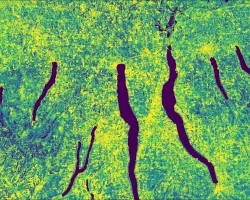Kansas is a leading state in agricultural production, however, during recent droughts, farmers experienced decreased yields that negatively impacted the state and national economies. The exponential decay of soil moisture content is a major consequence of drought, stymieing plant growth. This study examined the rate of soil moisture drydown to understand and mitigate the damage caused by soil water shortage. Soil Moisture Active Passive (SMAP) L-band Radiometer rootzone soil moisture imagery from March 2015 to the present was used to understand the minimum and maximum soil moisture capacity. The variables selected from SMAP and parameters derived from in situ data were input into an exponential model. The model forecasted, for a given length of time, the rootzone soil moisture assuming no precipitation. Another model was used to identify areas in Kansas currently below a given percentage of their relative soil moisture saturation, measured as a function of minimum, maximum, and current soil moisture, and forecasted the number of days until the other pixels would reach that level. The data were observed at a spatial resolution of 9 km × 9 km. These outputs were compared to Evaporative Drought Demand Index (EDDI) data to understand the relationship between agricultural and meteorological drought for our partners at Kansas State University and the Desert Research Institute. Additionally, the project assisted the Kansas Water Office and Kansas Office of the State Climatologist at Kansas State University in creating statewide drought mitigation plans and disseminating comprehensive information to farmers.



